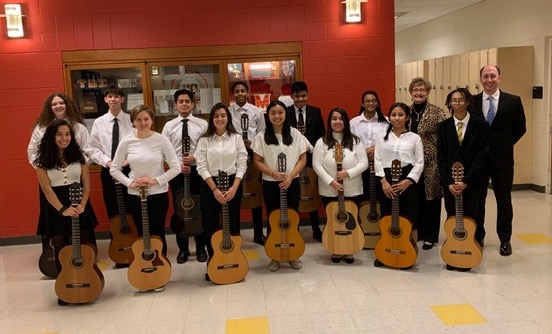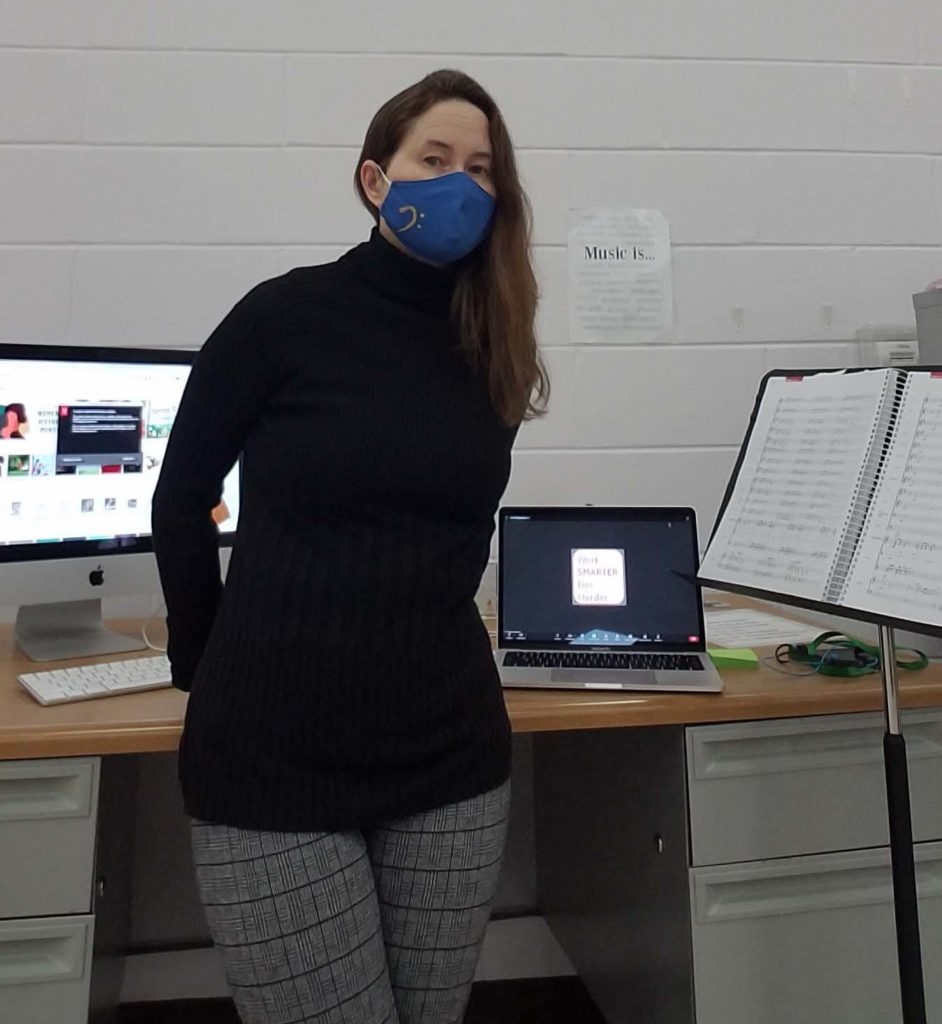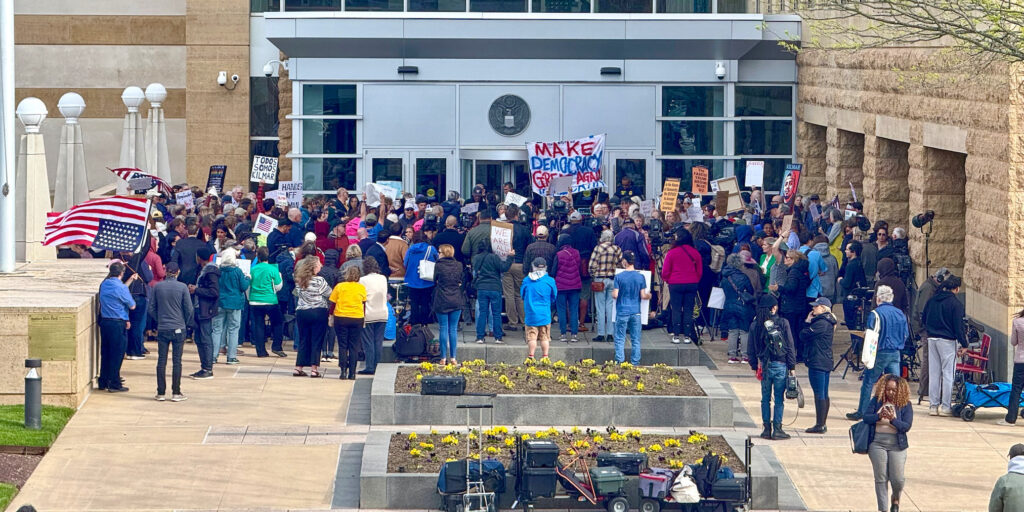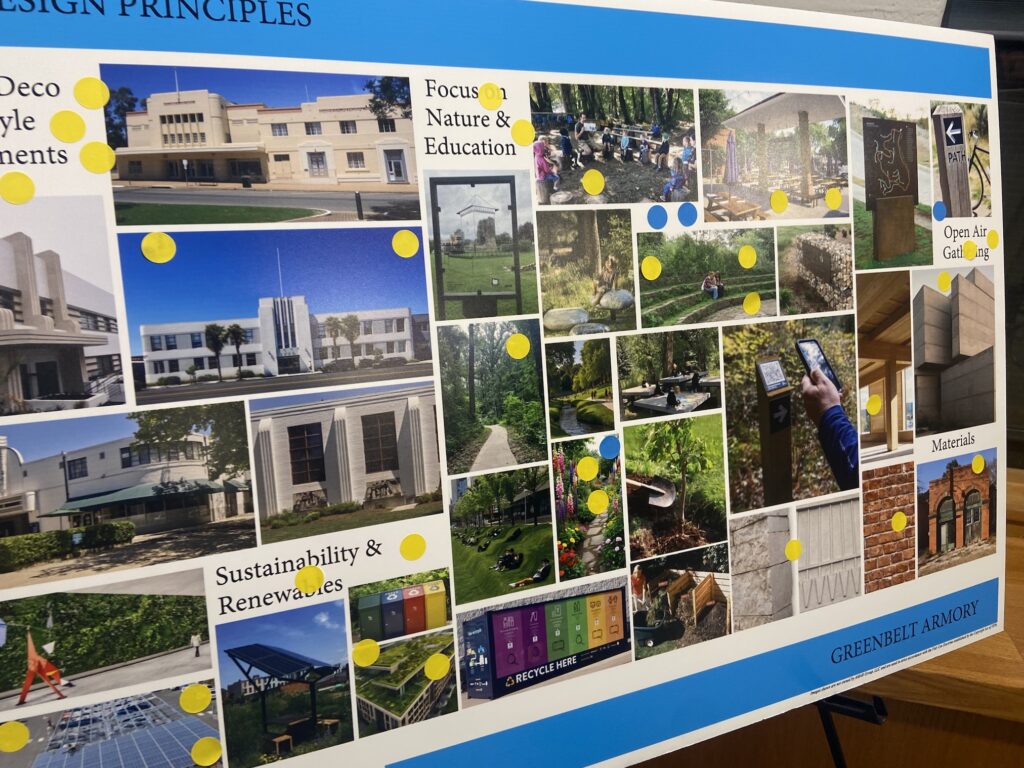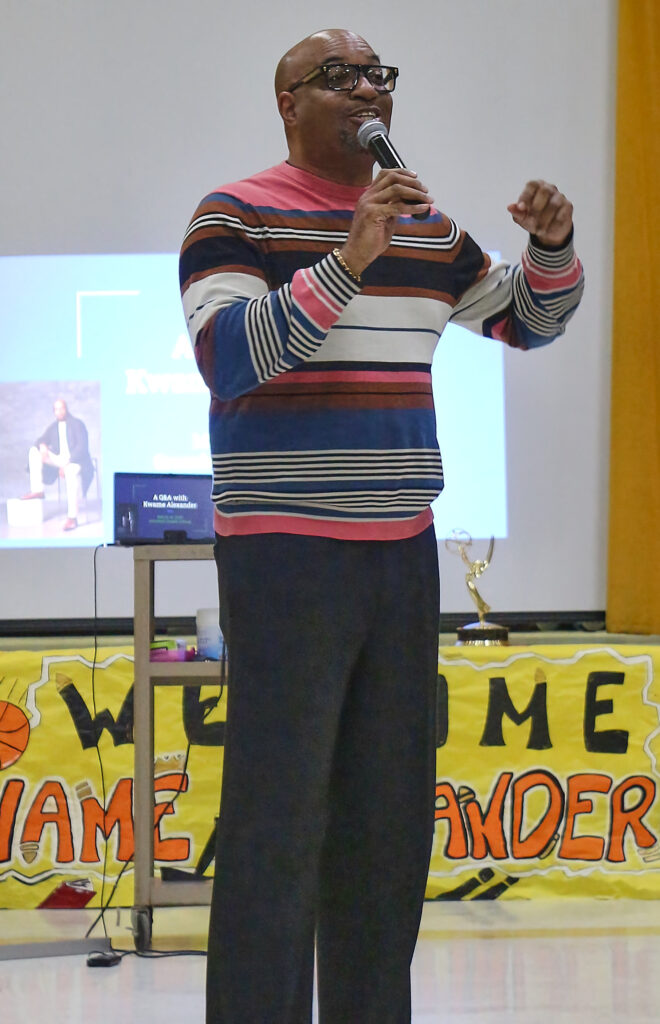Music is one area where being together in person is an integral part, as performers connect to each other and an audience. Music teachers at Greenbelt Middle School (GMS) and Eleanor Roosevelt High School (ERHS) have endeavored, like all teachers and students dealing with the social restrictions of the pandemic, to keep their programs alive and stimulating through new and creative approaches. While some things have been lost due to isolation, others things have been discovered and even improved upon in unexpected ways.
According to Darelynn Fung, the band teacher at GMS, “the biggest challenge for me has been connecting with the students. They are coming to class from so many different
situations and often with tech problems that make it hard to get them the information in a clear way. This is especially hard with eighth grade. Many of these students have been in my band class since sixth grade and it’s tough knowing that I may not see them before they head to high school.” Performances have not been possible so far, including festival adjudications. Fung was impressed with the ease that her students have shown in navigating the virtual setting and “how well the students can still show their personalities and engage with each other through Zoom.” The internet time lag has led to greater patience, something she hopes “we can keep when we return to the band room.”
Kevin Hawk, the guitar teacher at ERHS, has found the inability to have group performances a major loss, even though he was still able to do a lot of the same things that were done face to face. Students have been able to submit videos for festival adjudication. It has been difficult to provide guitars for all students, due to the problem of nationwide backorders, and the unforeseen hurdle of simply tuning has arisen, because of the Zoom restrictions. Hawk has introduced an interactive music theory program, play-a-long and instructional videos, an assignment/practice video uplink system and a cloud-based recording program, among other things. A guitar teacher for over 20 years, he never thought that teaching guitar online would be “as successful as it has been.” He has grown as a teacher and is “excited to use these new tools and skills when we return to the new normal.”
For ERHS band teacher Rachel Zephir, the pandemic has both allowed opportunities, like the added time for exploring improvisation and music from different cultures, while presenting obstacles, such as the inability to perform live. Rehearsing entire pieces is difficult as well as assessing individual students’ progress. Group recordings have been made but the process is laborious. A plus is that she has been able to bring in, via Zoom, guest musicians and alumni who have shared their experiences as musicians “so my students can plan their future in a Covid world.”
While the pandemic has “definitely caused some devastation to any of us who teach ensembles,” ERHS vocal teacher Michele Fowlin has found ways to “spark other areas of creativity that oftentimes we may have neglected,” such as “music technology, deeper dives into musicianship and strengthening the individual skills.” Though the essential live element was lost, a virtual choir recording was done. Fowlin provided instrumental recordings that have been used for singers to work with individually. While some have suffered from the isolation, others “have done better than when we were in person,” making evident the value of music as “such an incredible learning tool,” in its ability to instill creativity and inspiration “just by the mere presence and love expressed by each other.”
Fowlin remarked that “the pandemic has connected us all the more together because we have intentionally placed time and energy into being connected yet apart. Any choir or band can make good music but when the members are bonded to one another, the music transforms itself to an entirely different level. So, if these groups ever have the opportunity to come together, ooo wee, it’s going to be incredible!”
